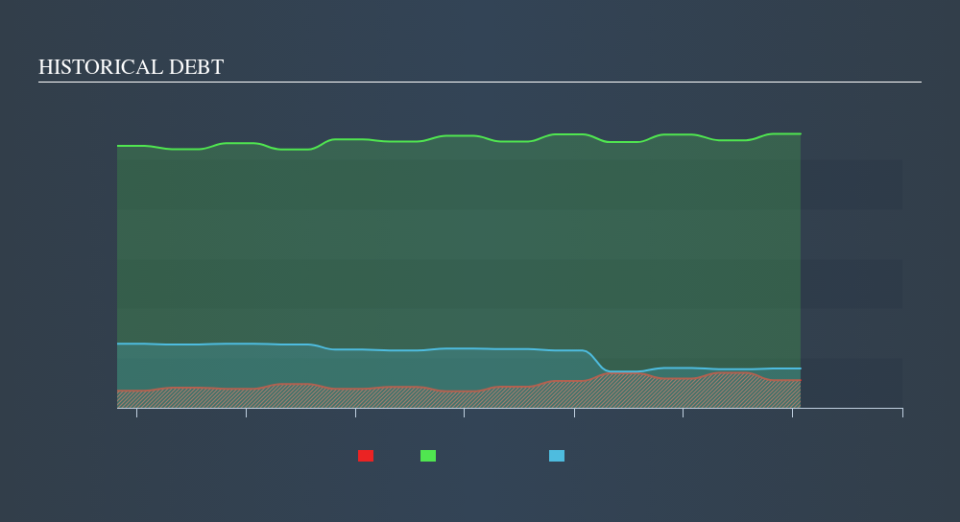We Think Premier Investments (ASX:PMV) Can Stay On Top Of Its Debt

Legendary fund manager Li Lu (who Charlie Munger backed) once said, 'The biggest investment risk is not the volatility of prices, but whether you will suffer a permanent loss of capital.' When we think about how risky a company is, we always like to look at its use of debt, since debt overload can lead to ruin. We can see that Premier Investments Limited (ASX:PMV) does use debt in its business. But the real question is whether this debt is making the company risky.
What Risk Does Debt Bring?
Generally speaking, debt only becomes a real problem when a company can't easily pay it off, either by raising capital or with its own cash flow. If things get really bad, the lenders can take control of the business. While that is not too common, we often do see indebted companies permanently diluting shareholders because lenders force them to raise capital at a distressed price. By replacing dilution, though, debt can be an extremely good tool for businesses that need capital to invest in growth at high rates of return. When we examine debt levels, we first consider both cash and debt levels, together.
View our latest analysis for Premier Investments
How Much Debt Does Premier Investments Carry?
The image below, which you can click on for greater detail, shows that Premier Investments had debt of AU$138.8m at the end of January 2019, a reduction from AU$146.6m over a year. But on the other hand it also has AU$197.8m in cash, leading to a AU$59.0m net cash position.
How Strong Is Premier Investments's Balance Sheet?
We can see from the most recent balance sheet that Premier Investments had liabilities of AU$160.2m falling due within a year, and liabilities of AU$231.7m due beyond that. On the other hand, it had cash of AU$197.8m and AU$25.8m worth of receivables due within a year. So its liabilities total AU$168.3m more than the combination of its cash and short-term receivables.
Given Premier Investments has a market capitalization of AU$2.44b, it's hard to believe these liabilities pose much threat. But there are sufficient liabilities that we would certainly recommend shareholders continue to monitor the balance sheet, going forward. Despite its noteworthy liabilities, Premier Investments boasts net cash, so it's fair to say it does not have a heavy debt load!
Also good is that Premier Investments grew its EBIT at 12% over the last year, further increasing its ability to manage debt. There's no doubt that we learn most about debt from the balance sheet. But it is future earnings, more than anything, that will determine Premier Investments's ability to maintain a healthy balance sheet going forward. So if you're focused on the future you can check out this free report showing analyst profit forecasts.
Finally, a company can only pay off debt with cold hard cash, not accounting profits. While Premier Investments has net cash on its balance sheet, it's still worth taking a look at its ability to convert earnings before interest and tax (EBIT) to free cash flow, to help us understand how quickly it is building (or eroding) that cash balance. Looking at the most recent three years, Premier Investments recorded free cash flow of 40% of its EBIT, which is weaker than we'd expect. That's not great, when it comes to paying down debt.
Summing up
While it is always sensible to look at a company's total liabilities, it is very reassuring that Premier Investments has AU$59m in net cash. And it also grew its EBIT by 12% over the last year. So we are not troubled with Premier Investments's debt use. Another positive for shareholders is that it pays dividends. So if you like receiving those dividend payments, check Premier Investments's dividend history, without delay!
If, after all that, you're more interested in a fast growing company with a rock-solid balance sheet, then check out our list of net cash growth stocks without delay.
We aim to bring you long-term focused research analysis driven by fundamental data. Note that our analysis may not factor in the latest price-sensitive company announcements or qualitative material.
If you spot an error that warrants correction, please contact the editor at editorial-team@simplywallst.com. This article by Simply Wall St is general in nature. It does not constitute a recommendation to buy or sell any stock, and does not take account of your objectives, or your financial situation. Simply Wall St has no position in the stocks mentioned. Thank you for reading.

